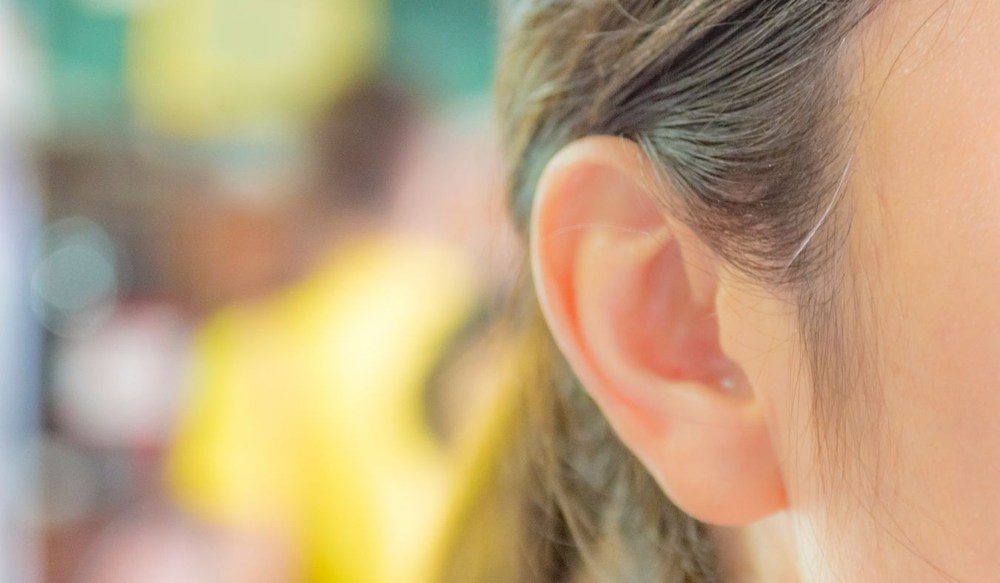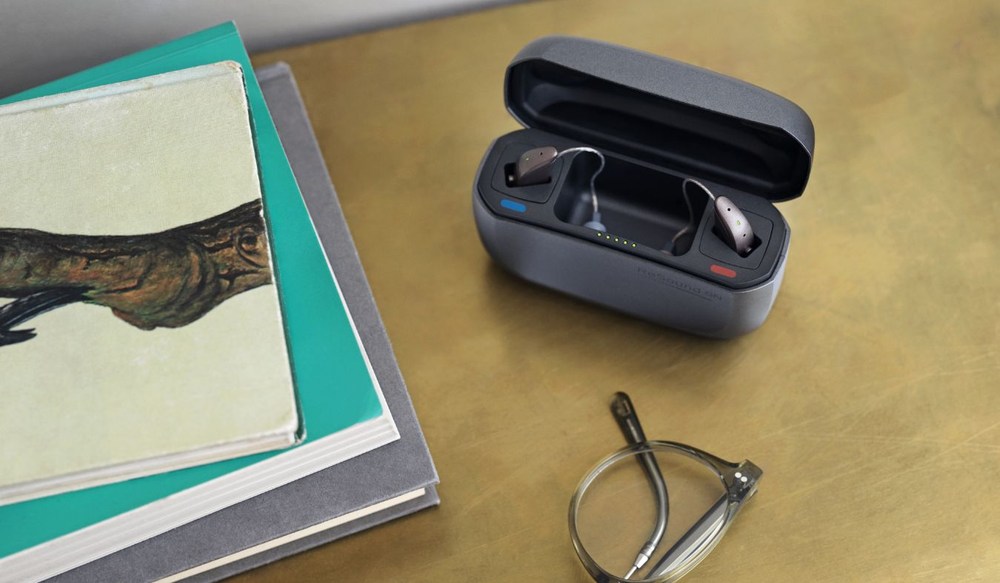How Smart Home Devices Are Improving Hearing Care
Smart home devices are changing how people with hearing challenges manage

By: admin | May 30, 2024
Hearing aids can transform the way you manage your hearing loss. But what happens when you also wear glasses? Both tools sit around the same area on your ears, and this might raise some concerns. Don’t worry, though, you’re not the only one with these questions.
Understanding how to use hearing aids and glasses simultaneously can make your life much easier. With this knowledge, you can avoid discomfort and interference, making your day-to-day activities run smoothly. Plus, you can optimize the functionality of both your hearing aids and glasses, significantly enhancing your quality of life.
It might seem tricky to manage wearing both hearing aids and glasses. But, simple steps can make this process easier. First, ensure your glasses and hearing aids fit properly. A snug but comfortable fit is essential for both devices to work optimally without causing discomfort. When putting them on, always put your glasses on first, followed by your hearing aids.
Consider the style of both your glasses and hearing aids. Opting for thin temple glasses and smaller hearing aids can minimize any potential conflict between these two essential tools. Regular maintenance is also important – keeping both your devices clean will prevent skin irritation around the ears and improve their longevity.
Comfort and proper fit are achieved through careful selection and fitting. When you’re being fitted for hearing aids, it’s important to bring your glasses along. This allows the specialist to consider the style and size of your glasses when helping you choose a hearing aid.
A well-fitted hearing aid should sit comfortably behind your ear, without pushing against your glasses or causing discomfort. Likewise, your glasses should rest easily on your ears without pressing on the hearing aids. Achieving a balance where both devices can coexist without causing discomfort is the goal.
There are pros and cons associated with wearing both devices. On the positive side, using both devices simultaneously can significantly enhance your quality of life by improving both vision and hearing. On the downside, there may be initial discomfort as you adjust to wearing both devices together. However, this can be minimized by taking the time to ensure proper fit and comfort during the selection process.
Choosing the right type of hearing aid to use with glasses can make a significant difference in your comfort and overall experience. It’s about finding a model that fits well with your glasses and meets your hearing needs.
Consider behind-the-ear (BTE) or receiver-in-canal (RIC) models as they are designed to sit comfortably behind the ear, thus reducing potential interference with glasses. Your audiologist can guide you in making the best choice for your unique situation.
The world of hearing aids can seem overwhelming. That’s where your audiologist comes in, offering guidance and expertise. They play a crucial role in helping you select the right aid for your specific needs and lifestyle.
They’ll consider several factors like your level of hearing loss, lifestyle, budget and even how you wear your glasses. With their assistance, you can feel confident about choosing a hearing aid that will work harmoniously with your glasses and enhance your day-to-day experiences.
Adapting to life using both hearing aids and glasses may initially seem like a daunting task, but with patience and the right guidance, it can become second nature. Understanding how to wear and maintain both devices properly is key. While it may take some time to get used to wearing both at the same time, the benefits you’ll gain in terms of improved vision and hearing are well worth the effort.
Wearing both glasses and hearing aids can significantly enhance your quality of life. Improved vision combined with better hearing can help you engage more fully in conversations, enjoy your favorite TV shows or music and generally participate more actively in everyday activities. There might be some initial discomfort as you adjust to having two devices around your ears. But don’t worry – this is something that most people quickly get used to with time.
While there are challenges associated with wearing both glasses and hearing aids together, they are easily overcome with a little practice and guidance from your audiologist. The key is finding a comfortable fit for both devices and learning how to put them on correctly. Once you’ve got that down, you’ll be able to enjoy all the benefits that come from improved sight and sound.
Let’s discuss some practical tips for managing your glasses and hearing aids together. First off, when removing your devices, always take off your hearing aids before your glasses. This will prevent any accidental damage or dislodging of the hearing aids.
Next, keep a small mirror handy. It can be incredibly helpful in checking the placement of your hearing aids while wearing glasses. With these simple strategies, handling both devices can become second nature. Need more advice? Don’t hesitate to reach out to your audiologist – they’re here to help you navigate this new terrain with ease!
Keeping your glasses and hearing aids clean is a critical part of maintaining optimal functionality. Both devices can accumulate dust and debris, which can affect their performance if not properly addressed.
So, keeping your glasses and hearing aids clean isn’t just about hygiene; it’s about making sure you’re getting the most out of these devices every single day.
After understanding the basics and overcoming the hurdles, you’re now ready to maximize the functionality of your glasses and hearing aids. By following some practical tips, you can ensure both devices work at their best, providing you with optimal vision and hearing.
Cleaning your glasses is a simple yet essential task to maintain clear vision and ensure optimal performance of your eyewear. Begin by rinsing your glasses under lukewarm water to remove any debris or dirt particles. Next, apply a small drop of mild dish soap to each lens and gently rub it with your fingertips to create a lather, ensuring to cover the entire surface area. Rinse the glasses again under running water to remove the soap, being careful not to use hot water, as it can damage lens coatings. Finally, gently dry your glasses with a clean, lint-free cloth, like a microfiber cloth, to prevent streaks or smudges. Avoid using paper towels or clothing, as they may scratch the lenses.
Cleaning your hearing aids is crucial for maintaining their functionality and longevity. Start by turning off your hearing aids and removing them from your ears. Use a dry, soft cloth or tissue to gently wipe away any wax or debris from the surface of the hearing aids, being careful not to push debris further into the device. Use a specialized hearing aid cleaning brush to clean hard-to-reach areas, like the microphone ports and vents. Additionally, consider using a wax pick or loop to carefully remove any wax buildup from the sound outlet and receiver. Avoid using water or cleaning solutions unless specified by your audiologist, as moisture can damage the internal components of the hearing aids.
The secret to maximizing functionality lies in routine maintenance and correct usage. Both your glasses and hearing aids need regular cleaning to perform at their peak. Additionally, ensuring proper fit is key – if your hearing device feels uncomfortable or loose, consult your audiologist for adjustments.
Here are some tips to help you get the most out of your devices:
Wearing both hearing aids and glasses can sometimes lead to feedback issues. Feedback, in this context, refers to the annoying whistling sound that occurs when the microphone of your hearing aid picks up sounds that have already been amplified. This can happen when wearing glasses, as they may push against the hearing aid and cause it to dislodge slightly, leading to feedback.
However, this doesn’t mean you’re stuck with these unpleasant sounds. There are steps you can take to reduce or eliminate feedback issues. Firstly, ensuring a proper fit for both your glasses and hearing aids is crucial. If your devices are correctly fitted and comfortably positioned, chances of experiencing feedback are significantly reduced. Secondly, regular check-ups with your audiologist can help identify any potential issues early on and provide solutions before they become bigger problems. So while feedback can be a common concern when using both devices simultaneously, it’s something that can be effectively managed with a little attention and care.
Adapting to the use of both glasses and hearing aids may necessitate a few lifestyle changes. These adjustments, while they may seem small, can make a significant difference in your comfort and overall experience with these essential tools.
For instance, you might need to develop new habits like putting on your glasses first before wearing your hearing aids or removing your hearing aids before taking off your glasses. This order is crucial in preventing accidental dislodging or damage to your hearing aids. Another helpful habit is regular cleaning of both devices to ensure their optimal performance.
Furthermore, keeping an open line of communication with your audiologist is important. Regular check-ups can help ensure that both devices are functioning properly and fitting comfortably. If any issues arise, they can provide timely solutions and advice. Remember, these small adjustments to your routine can significantly enhance the effectiveness of both devices, improving not only vision and hearing but also overall quality of life.
Navigating the world of hearing aids and glasses can be a complex journey, but remember, you’re not alone. We at Little Rock Audiology Clinic are here to assist you every step of the way. Our team of dedicated hearing health professionals is ready to provide guidance and solutions tailored to your unique needs. Don’t hesitate to reach out for more information or schedule an appointment at our Little Rock, AR location by calling (501) 664-5511.
Using both glasses and hearing aids doesn’t have to be a daunting task. With patience, proper care and professional guidance from your trusted hearing health experts at Little Rock Audiology Clinic, you can confidently enjoy improved vision and enhanced listening experiences every day!
Tags: benefits of hearing aids, hearing aid repair, hearing aid styles

Smart home devices are changing how people with hearing challenges manage
By: admin | November 18, 2025

You probably don’t realize how much work your brain does throughout
By: admin | September 24, 2025

Spring pulls us outdoors for gardening, hiking, biking and countless other
By: admin | May 23, 2025
